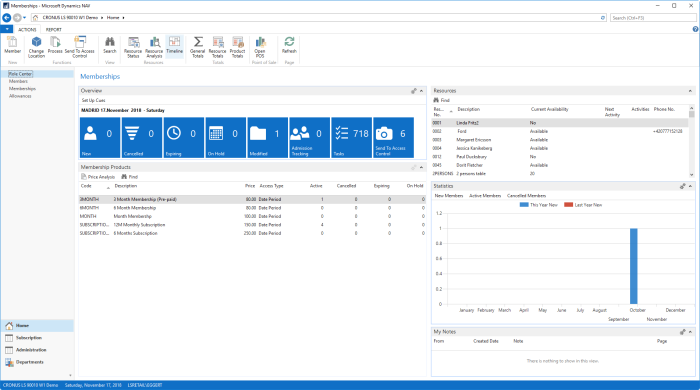The purpose of the LS Membership module is to manage memberships, subscriptions, and invoicing, and optionally integrate with access control solutions, such as gate controllers.
Memberships are assigned to members (member contacts) which are shared with all LS Central modules to identify the client and to be a placeholder for the client details in the solution. Each member can have multiple memberships, but normally, only one so-called main membership. Additional extra memberships, however, can also be assigned or sold.
Note: A membership is normally issued to indicate the services the client should receive or to access privileges. A membership can either be sold as a single-sale (normally through point of sale), or assigned and issued as subscription-based (either through web or POS/back end features). When a membership is sold or issued, it defines the access period when the member has valid access, and can also assign a member club or scheme to the member contact. This may lead to special discounting and pricing, according to the standard member club features in LS Central.
Subscription-based memberships can be defined to have
- a commitment period (the period when you cannot cancel the subscription)
- a price commitment period (the period when you cannot change the subscription price), and
- an expiry date (optional), if the membership is set for a fixed period.
The subscription memberships are then processed at fixed intervals (for example monthly), where the next period is invoiced, and a new access period is set. You can have a mix of monthly, quarterly, yearly and so on memberships, and you can define subscription types to handle that.
It is possible to put a membership on hold, by the clients’ request, until a specific date, for example if they get sick or go on vacation.
Each member can have a prepaid deposit account which he or she can use to pay for goods and services.
Note: This account is kept out of the accounts receivables and will not be charged to the member's Customer account, but kept separate to be used as payment for goods and services at the POS:
